Cytokines in Allergic Conjunctivitis: Unraveling Their Pathophysiological Roles
- PMID: 38541674
- PMCID: PMC10971254
- DOI: 10.3390/life14030350
Cytokines in Allergic Conjunctivitis: Unraveling Their Pathophysiological Roles
Abstract
Allergic conjunctivitis is one of the common immune hypersensitivity disorders that affect the ocular system. The clinical manifestations of this condition exhibit variability contingent upon environmental factors, seasonal dynamics, and genetic predisposition. While our comprehension of the pathophysiological engagement of immune and nonimmune cells in the conjunctiva has progressed, the same cannot be asserted for the cytokines mediating this inflammatory cascade. In this review, we proffer a comprehensive description of interleukins 4 (IL-4), IL-5, IL-6, IL-9, IL-13, IL-25, IL-31, and IL-33, as well as thymic stromal lymphopoietin (TSLP), elucidating their pathophysiological roles in mediating the allergic immune responses on the ocular surface. Delving into the nuanced functions of these cytokines holds promise for the exploration of innovative therapeutic modalities aimed at managing allergic conjunctivitis.
Keywords: IL-13; IL-25; IL-31; IL-4; IL-5; IL-6; IL-9; Th2 cells; mast cells; pathophysiology.
Conflict of interest statement
The authors declare no conflicts of interest.
Figures
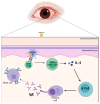
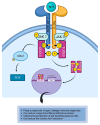
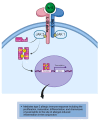
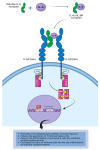


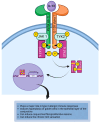
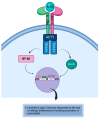


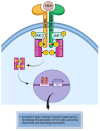
Similar articles
-
Recent advances in epithelium-derived cytokines (IL-33, IL-25, and thymic stromal lymphopoietin) and allergic inflammation.Curr Opin Allergy Clin Immunol. 2015 Feb;15(1):98-103. doi: 10.1097/ACI.0000000000000133. Curr Opin Allergy Clin Immunol. 2015. PMID: 25479313 Free PMC article. Review.
-
IL-27 signaling deficiency develops Th17-enhanced Th2-dominant inflammation in murine allergic conjunctivitis model.Allergy. 2019 May;74(5):910-921. doi: 10.1111/all.13691. Epub 2019 Jan 4. Allergy. 2019. PMID: 30515838 Free PMC article.
-
Roles of Epithelial Cell-Derived Type 2-Initiating Cytokines in Experimental Allergic Conjunctivitis.Invest Ophthalmol Vis Sci. 2015 Aug;56(9):5194-202. doi: 10.1167/iovs.15-16563. Invest Ophthalmol Vis Sci. 2015. PMID: 26244295
-
Immunolocalization of cytokines to mast cells in normal and allergic conjunctiva.Clin Exp Allergy. 1997 Nov;27(11):1328-34. Clin Exp Allergy. 1997. PMID: 9420138
-
Expression and Regulation of Thymic Stromal Lymphopoietin and Thymic Stromal Lymphopoietin Receptor Heterocomplex in the Innate-Adaptive Immunity of Pediatric Asthma.Int J Mol Sci. 2018 Apr 18;19(4):1231. doi: 10.3390/ijms19041231. Int J Mol Sci. 2018. PMID: 29670037 Free PMC article. Review.
Cited by
-
Allergic Conjunctivitis: Review of Current Types, Treatments, and Trends.Life (Basel). 2024 May 21;14(6):650. doi: 10.3390/life14060650. Life (Basel). 2024. PMID: 38929634 Free PMC article. Review.
-
Overview of Microorganisms: Bacterial Microbiome, Mycobiome, Virome Identified Using Next-Generation Sequencing, and Their Application to Ophthalmic Diseases.Microorganisms. 2025 Jun 3;13(6):1300. doi: 10.3390/microorganisms13061300. Microorganisms. 2025. PMID: 40572188 Free PMC article. Review.
-
Corneal biomechanics in patients with allergic conjunctivitis.Indian J Ophthalmol. 2024 Nov 1;72(Suppl 5):S728-S733. doi: 10.4103/IJO.IJO_654_24. Epub 2024 Sep 19. Indian J Ophthalmol. 2024. PMID: 39297487 Free PMC article. Review.
-
Current perspectives on topical antiallergics.Indian J Ophthalmol. 2025 Apr 1;73(4):521-525. doi: 10.4103/IJO.IJO_1608_24. Epub 2024 Dec 27. Indian J Ophthalmol. 2025. PMID: 39728683 Free PMC article. Review.
-
India's Pink-Eye Mystery: Decoding the 2023 Conjunctivitis Outbreak.Infect Disord Drug Targets. 2025;25(3):e190724232040. doi: 10.2174/0118715265291922240625054709. Infect Disord Drug Targets. 2025. PMID: 39039676 Review.
References
Publication types
LinkOut - more resources
Full Text Sources

